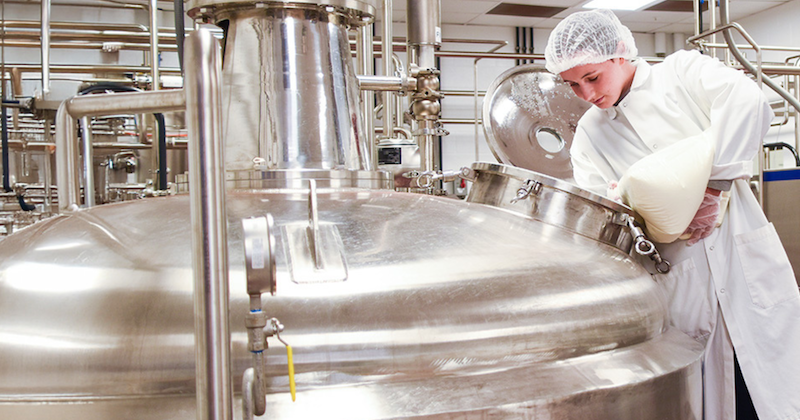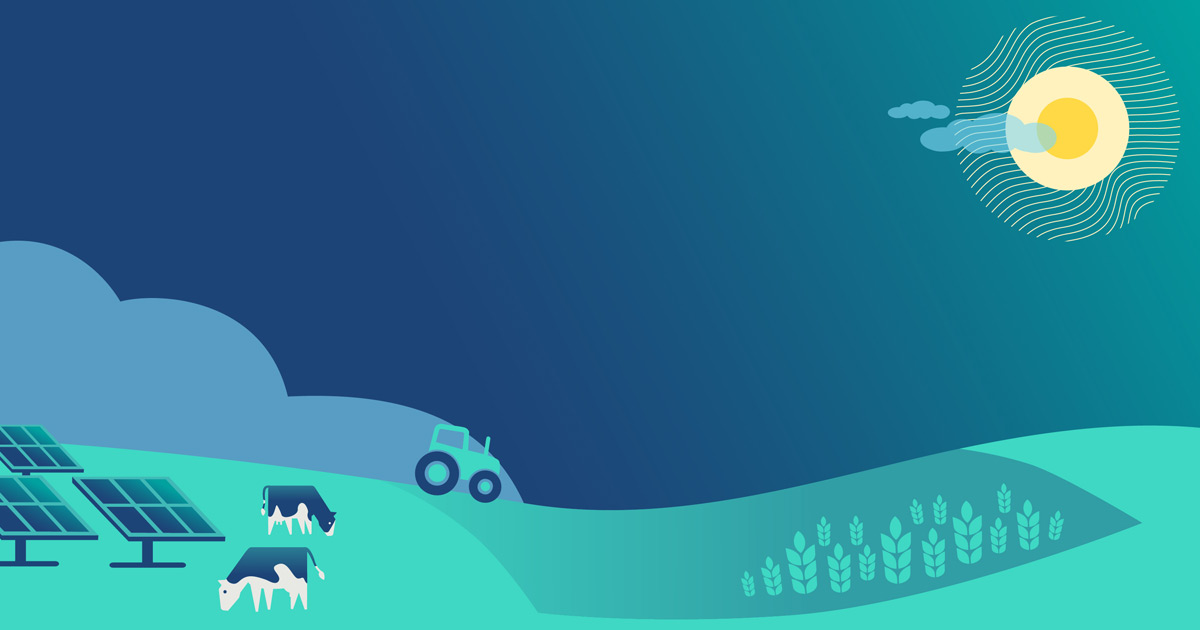The science of food – University of Delaware

Report on Experiential Learning and Sustainable Development Goal Alignment
Fostering Quality Education and Decent Work (SDG 4 & SDG 8)
An internship program at the UDairy Creamery, utilizing the facilities at the GFIL, provides students with invaluable career preparation, directly supporting Sustainable Development Goal 4 (Quality Education) and SDG 8 (Decent Work and Economic Growth). The program offers comprehensive, hands-on training that bridges academic knowledge with practical industry application.
- Participants gain expertise in dairy processing, quality assurance, and product development.
- The experience includes engagement with the business aspects of food production.
- This applied learning model is instrumental in preparing students for successful careers in the food and agriculture sector, as evidenced by one participant, Connelly, securing a subsequent research and development internship with fairlife.
Driving Innovation in Sustainable Food Systems (SDG 9 & SDG 12)
The progression from university-based training to corporate research demonstrates a pathway toward fostering innovation and responsible production within the food industry, aligning with SDG 9 (Industry, Innovation, and Infrastructure) and SDG 12 (Responsible Consumption and Production).
- Initial training at the UDairy Creamery allows students to engage in the full cycle of product creation, from processing to flavor development.
- Advanced internship opportunities, such as the one with fairlife, allow students to specialize in product development, contribute to individual research projects, and create new products for a national brand.
- This experience directly involves students in the innovation required to develop and sustain modern food systems.
Cultivating Global Perspectives on Food Security (SDG 2 & SDG 17)
Educational opportunities are enhanced through immersive international programs that provide a global context for food and agriculture, reinforcing the principles of SDG 2 (Zero Hunger) and SDG 17 (Partnerships for the Goals).
- A study abroad program in Italy focused on Italian Food Culture (SOCI 267) and Food and Agriculture (PLSC 167), offering insight into one of the world’s significant food cultures.
- The program included a visit to the Food and Agriculture Organization of the United Nations (FAO), a specialized agency that leads international efforts to defeat hunger.
- This engagement provides students with a direct understanding of the global partnerships and policies aimed at achieving food security and promoting sustainable agriculture worldwide.
Analysis of Sustainable Development Goals in the Article
-
Which SDGs are addressed or connected to the issues highlighted in the article?
-
SDG 4: Quality Education
The article is centered on the educational experiences of a university student, Connelly. It highlights how her university provides practical, hands-on learning opportunities through internships and study abroad programs that enhance her formal education.
-
SDG 8: Decent Work and Economic Growth
The article connects education directly to career preparation and employment. The internships are described as “excellent preparation for future career success,” focusing on developing skills for the workforce.
-
SDG 2: Zero Hunger
The subject matter of Connelly’s studies and internships—food science, dairy processing, and agriculture—is directly related to the food production system. Her visit to the Food and Agriculture Organization of the United Nations (FAO) explicitly links her education to the global entity responsible for leading international efforts to defeat hunger.
-
SDG 12: Responsible Consumption and Production
The article discusses activities like “milk processing and production,” “quality assurance,” and “product development.” These are integral components of the production patterns within the food industry, which is a key focus of SDG 12.
-
SDG 4: Quality Education
-
What specific targets under those SDGs can be identified based on the article’s content?
-
Target 4.4: Increase the number of youth and adults with relevant skills for employment
The article directly addresses this target by detailing how Connelly is gaining relevant skills. Her internship involves “milk processing and production,” “quality assurance and product development,” which the article states “directly correlates into a future field and career.” Professor Kniel calls this experience “invaluable” for preparing students for their careers.
-
Target 8.6: Reduce the proportion of youth not in employment, education or training
The article provides a case study of a youth actively engaged in education and vocational training. Connelly’s internships at the UDairy Creamery and fairlife are forms of training that bridge the gap between education and employment, directly addressing the goal of ensuring youth are prepared for and engaged in the workforce.
-
Target 2.a: Increase investment in agricultural research and technology development
While the article doesn’t discuss investment directly, it highlights the application of food science and technology. Connelly’s work in “product development” and her project of “creating a new flavor for fairlife milk and protein shakes” are examples of innovation and technology development within the food and agriculture sector. Her visit to the FAO also connects her to the global hub for agricultural knowledge.
-
Target 12.2: Achieve the sustainable management and efficient use of natural resources
The focus on “dairy processing” and “quality assurance” implies an engagement with the processes of food production. These fields inherently involve managing natural resources (like milk) efficiently to create products (ice cream, cheese, shakes), which aligns with the principles of this target.
-
Target 4.4: Increase the number of youth and adults with relevant skills for employment
-
Are there any indicators mentioned or implied in the article that can be used to measure progress towards the identified targets?
- Indicator for Target 4.4: The existence of and student participation in specialized internship programs. The article provides specific examples: the UDairy Creamery internship and Connelly attaining a “research and development internship with fairlife.” The skills learned, such as “milk processing,” “product development,” and understanding the “business aspect,” serve as qualitative indicators of relevant skill acquisition.
- Indicator for Target 8.6: The number of students securing career-relevant internships. Connelly’s successful placement in an internship at fairlife’s headquarters is a direct, albeit anecdotal, indicator of a youth being on a clear path from education to employment.
- Indicator for Target 2.a: Engagement with international agricultural organizations and innovation in food products. The article mentions Connelly’s visit to the “Food and Agriculture Organization of the United Nations (FAO)” as an indicator of engagement. The development of a “new flavor for fairlife milk and protein shakes” is a concrete indicator of product development and innovation in the food industry.
- Indicator for Target 12.2: The application of food processing and quality assurance techniques. The article’s mention of activities like “making ice cream, making cheese” and Connelly’s involvement in “quality assurance” implies the use of specific production processes. The efficiency and sustainability of these processes would be the measure.
-
Create a table with three columns titled ‘SDGs, Targets and Indicators” to present the findings from analyzing the article. In this table, list the Sustainable Development Goals (SDGs), their corresponding targets, and the specific indicators identified in the article.
SDGs Targets Indicators SDG 4: Quality Education 4.4: By 2030, substantially increase the number of youth and adults who have relevant skills, including technical and vocational skills, for employment, decent jobs and entrepreneurship. Student participation in hands-on internships (UDairy Creamery, fairlife); Acquisition of specific skills like “milk processing,” “quality assurance,” and “product development.” SDG 8: Decent Work and Economic Growth 8.6: By 2020, substantially reduce the proportion of youth not in employment, education or training. A student securing a “research and development internship” with a major company (fairlife) as a pathway from education to employment. SDG 2: Zero Hunger 2.a: Increase investment… in agricultural research and extension services, technology development… to enhance agricultural productive capacity. Student visit to the “Food and Agriculture Organization of the United Nations (FAO)”; Engagement in a project “creating a new flavor for fairlife milk and protein shakes” as an example of food technology development. SDG 12: Responsible Consumption and Production 12.2: By 2030, achieve the sustainable management and efficient use of natural resources. Engagement in food production activities such as “making ice cream, making cheese,” and “milk processing,” which involve the management of natural resources.
Source: udel.edu
What is Your Reaction?
 Like
0
Like
0
 Dislike
0
Dislike
0
 Love
0
Love
0
 Funny
0
Funny
0
 Angry
0
Angry
0
 Sad
0
Sad
0
 Wow
0
Wow
0

















































.jpg.webp?itok=0ZsAnae9#)





:focal(1500,1000)/https://media.globalcitizen.org/a6/9a/a69a4720-d8a1-4715-b596-18738d03c05c/rotary_polio_hero_image.jpg?#)



















